Nickname(s) Globus Name Odilo Globocnik Battles and wars World War II | Rank Gruppenfuhrer Role Political leader | |
 | ||
Awards Iron Cross, Golden Party Badge, German Cross, Infantry Assault Badge, War Merit Cross | ||
Odilo globocnik
Odilo Globocnik (21 April 1904 – 31 May 1945) was an Austrian war criminal. He was a Nazi and later an SS leader. As associate of Adolf Eichmann, he had a leading role in Operation Reinhard, which saw the murder of over one million mostly Polish Jews during the Holocaust in Nazi extermination camps Majdanek, Treblinka, Sobibor and Belzec. Historian Michael Allen described him as "the vilest individual in the vilest organization ever known".
Contents
- Odilo globocnik
- ODILO GLOBONIK ODILO GLOBOTSCHNIGG 2016DEC01
- Life
- Nazi Party and SS career
- Crimes in occupied Poland
- Extermination camps
- Activities in Italy
- Retreat and death
- Urban legends
- References
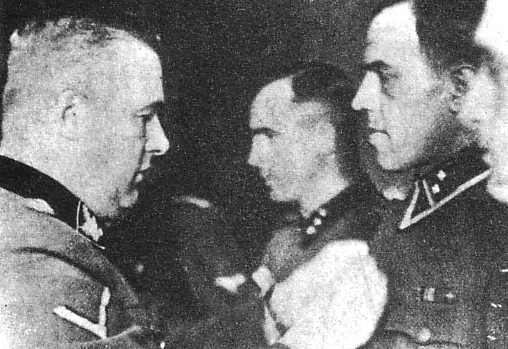
ODILO GLOBOČNIK / ODILO GLOBOTSCHNIGG ¤ (20)16_DEC_01
Life
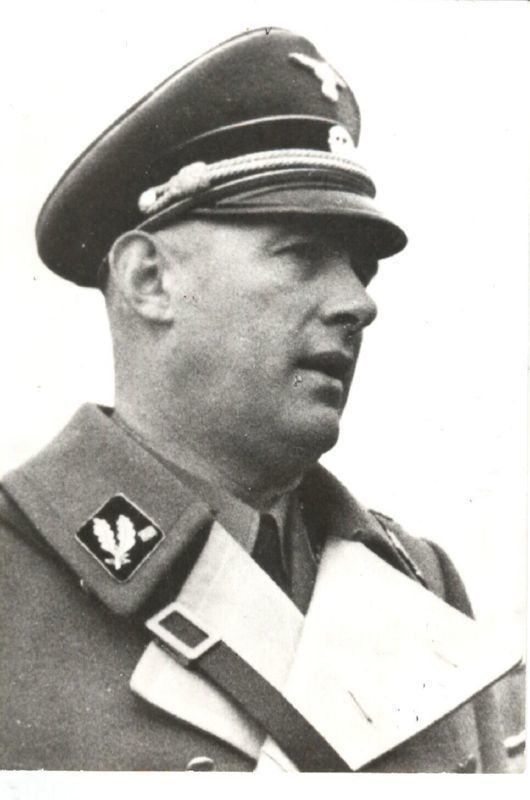
Odilo Globočnik was born on 21 April 1904, into a Germanised Slovene family from Tržič (Neumarktl), in the Imperial Free City of Trieste, then the capital of the Austrian Littoral administrative region of the Austro-Hungarian Empire (now in Italy). He was the second child of Franz Globočnik (also known as Globotschnig), a cavalry lieutenant in the Austro-Hungarian Army who came from a German-speaking Slovene family from the Upper Carniolan town of Tržič (German: Neumarktl; now in Slovenia). His father was unable to accumulate the money needed to get an officer's marriage permission and had to leave the service. As was the practice at this time, he was given a job in the Imperial and Royal Mail. His mother Anna, née Petschinka, was born in a mixed Czech-Banat Swabian family in Vršac (then Kingdom of Hungary, now in Serbia). In 1914, the family left Trieste for Cseklész, where Franz Globočnik was recalled to active duty after the outbreak of the First World War.
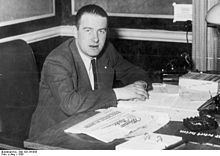
The same year, Odilo Globočnik joined the army, via a military school. The war ended his military education prematurely. Odilo and his family moved to Klagenfurt in Carinthia. There, he joined, as a teenager, the pro-Austrian volunteer militia fighting the Slovene volunteers and later the Yugoslav Army during the Carinthian War (1918–19). In 1920, he worked as an underground propagandist for the Austrian cause during the Carinthian Plebiscite.
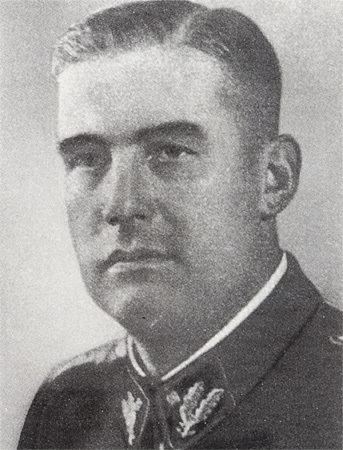
He later enrolled at the Höhere Staatsgewerbeschule (a higher vocational school for mechanical engineering), where he passed his Matura (the Austrian equivalent of the German Abitur) and graduated with honours. He performed jobs, such as carrying suitcases at the railway station, in order to help support the family financially.
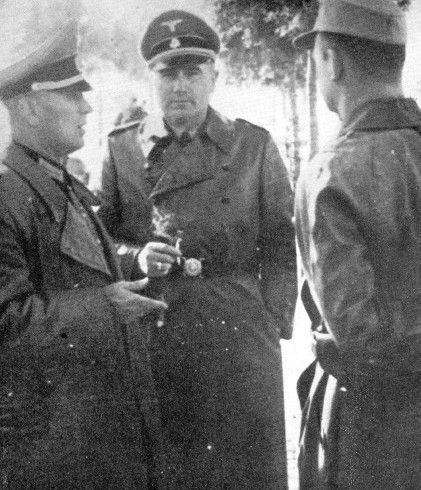
Globočnik first appeared in politics in 1922, when he became a prominent member of pre-Nazi Carinthian paramilitary organisations and was seen wearing a swastika. At the time, he was a building tradesman, introduced to this while engaged to Grete Michner. Her father, Emil Michner, talked to the director of KÄEWAG, a hydropower plant, and secured Globočnik a job as a technician and construction supervisor.
Nazi Party and SS career
In August 1933, Globočnik was arrested for the first time, for attempting to contact imprisoned Nazis in Klagenfurt. This was also the same year that he became a member of the Austrian SS. He was arrested because of his public support for the Nazi party (NSDAP), as he had become a member of the party three years earlier, in 1930 while in Carinthia. Although he was arrested four times between 1933 and 1935, he spent little over a year in jail. This was due to Heinrich Himmler’s intervention, after two years of arguments between Globočnik and the authorities.
His first documented activity for the NSDAP occurred in 1931, when his name appeared in documents relating to the spreading of propaganda for the party. By this point he had more or less abandoned his career as a building tradesman, and attached himself very closely to the NSDAP. One of his tasks for the NSDAP was to construct a courier and intelligence service, which channeled funds from the German Reich into Austria. In June 1933, in Vienna, a bomb was thrown at the shop of Jewish jeweller Norbert Futterweit, killing him. This was one of the first murders in Austria attributable to the National Socialists, and a number of historians believe that Globočnik was involved in the attack.
Globočnik was inducted into the SS on 1 September 1934. His fanatical devotion to the Nazi cause paid off for Globočnik, as he quickly climbed the ladder of the party apparatus in his native Austria. He became a Deputy Gauleiter for the whole of the country in 1933 at the age of 29, and was a key player in the usurpation of the Austrian government by the National Socialists.
The Anschluss saw the annexation of Austria by Nazi Germany in early 1938. Globočnik was rewarded for his diligence, being appointed Gauleiter of Vienna on 24 May 1938 by Adolf Hitler.
While Gauleiter of Vienna, Globočnik spread anti-Semitic propaganda:
In his early tenure as Gauleiter, Globočnik espoused Nazi anti-Jewish philosophy: "I will not recoil from radical interventions for the solution of Jewish questions." Later that same year he opened Vienna's first anti-Semitic political exhibition, which was attended by 10,000 visitors on the first day. Prominent at the exhibition and received enthusiastically by the public was the film, "The Eternal Jew".
Early gestures of accommodation to the new government by Cardinal Innitzer did not assuage the Austrian Nazi radicals, foremost among them the young Gauleiter Globočnik. He launched a crusade against the Church, and the Nazis confiscated property, closed Catholic organisations and sent many priests to Dachau. Anger at the treatment of the Church in Austria grew quickly and October 1938 saw the first act of overt mass resistance to the new regime, when a rally of thousands left Mass in Vienna chanting "Christ is our Führer", before being dispersed by police. A Nazi mob ransacked Cardinal Innitzer's residence, after he denounced Nazi persecution of the Church.
Globočnik was relieved of his post and stripped of his party honours in 1939, when it was discovered that he was involved in illegal foreign currency speculation. As punishment, Himmler transferred Globočnik to the Waffen SS, in the rank of corporal, where he served with SS Standarte Germania during the Polish campaign. Himmler liked Globočnik and recognised the value of the ruthless Austrian. In late 1939, Globočnik was pardoned, promoted to SS-Brigadeführer, and assigned to Lublin province.
Crimes in occupied Poland
On 9 November 1939, Himmler appointed Globočnik SS and Police Leader in the Lublin district of the General Government territory. After the initially disappointing party career, Globočnik now had a second chance in the ranks of the SS and the police. On 16 February 1940, Globočnik declared: "The evacuated Jews should feed themselves and be supported by their countrymen, as these Jews have enough [food]. If this does not succeed, one should let them starve."
In the years that followed Globočnik was responsible for:
- 'Liquidating' the Warsaw Ghetto, which contained about 500,000 Jews, the largest Jewish community in Europe and the second largest in the world after New York.
- Liquidating the Bialystok Ghetto, which stood out for its strong resistance to German occupation.
- Resettling a large number of Poles under the premise of 'ethnic cleansing'.
- Implementation and supervision of the Lublin reservation, to which 95,000 Jews were deported, with its adjacent network of forced labour camps in the Lublin district. He was also in charge of over 45,000 Jewish labourers.
Extermination camps
There are indications that Globočnik may have been the originator of the extermination camp industrialised murder concept and the one who suggested it to Himmler. At a two-hour meeting with Himmler on 13 October 1941, Globočnik received verbal approval to start construction work on the Belzec extermination camp, the first such camp in the General Government. Shortly beforehand, in September 1941, Globočnik had been visited by Phillip Bouhler and Victor Brack, the top officials in the Fuhrer Chancellery responsible for the Action T4 "euthanasia" program, which had been using gas chambers disguised as shower rooms to execute many of its victims. On or about 1 October 1941, Globočnik had written a memorandum to Himmler containing proposals for actions against the Jews "of a security policy nature," and the 13 October meeting was held to discuss this memorandum and related subjects. A colleague's contemporaneous letter reflects Globočnik's state of mind at the time of the 13 October meeting: Globočnik then considered it necessary to undertake a "cleansing of the entire [General Government] of Jews and Poles" and was "full of good and far-reaching plans" to accomplish this. There are even indications that Globočnik may have begun a crude experimental gassing facility in the woods near Belzec shortly before his mid-October meeting with Himmler. Globočnik at the 13 October 1941 meeting proposed exterminating the Jews in assembly-line fashion in a concentration camp utilising gas chambers. On 14 October 1941 – the day after he had met with Globočnik – Himmler held a five-hour meeting with Reinhard Heydrich to discuss "executions", following which there was a proliferation of other extermination camp gassing sites. Days later, Himmler forbade all further Jewish emigration from Reich territory "in view of the forthcoming 'Final Solution' to the Jewish question."
The gassing facilities that Globočnik established at Belzec soon after his 13 October meeting with Himmler used carbon monoxide, as the T4 programme had done, and were designed by T4 programme veterans assigned to Globočnik. Before it became an extermination camp, Belzec had been part of Himmler's and Globočnik's Burggraben project. The construction of three more camps, Sobibor and Maidanek in the Lublin district and Treblinka at Małkinia Górna, followed in 1942. Globočnik was complicit in the extermination of more than 1.5 million Polish, Czech, Dutch, French, Russian, Slovak, German, Portuguese, Turkish, Spanish and Austrian Jews as well as a smaller number of non-Jews in the death camps which he organised and supervised.
He exploited Jews and non-Jews as slave labourers in his own forced labour camps, and was responsible for seizing the properties and valuables of murdered inmates while in charge of Operation Reinhard. Although other arms of the Nazi state were also involved in the overall management of the greater concentration camp system, Globočnik had control over the Aktion Reinhard camps, and any orders that he received came directly from Himmler. From 1942–1943 he also oversaw the beginning of the Generalplan Ost, the plan to expel Poles from their lands and resettle those territories with German settlers (see Zamość Uprising).
Activities in Italy
After the Armistice of Cassibile Globočnik was appointed Higher SS and Police Leader of the Operational Zone of the Adriatic Littoral of Italy. After the completion of Operation Reinhard in Poland he was sent to Trieste, his hometown.
With him he brought to Trieste a large number of experienced killers who had distinguished records from various extermination operations in Germany, the Soviet Union and the death camps in occupied Poland at Belzec, Sobibor and Treblinka. They included the 92 specialists of Einsatzkommando Reinhard, many of whom were Ukrainian SS troops, male and female... Einsatzkommando Reinhard was divided into three geographical areas, the headquarters for each of which was officially denoted with a variation of the letter R - R1 for Trieste, R2 for Udine and R3 for Fiume.
Having looted some of the German assets stolen from Holocaust victims at death camps in occupied Poland, Globočnik went to Italy with a number of his men who had taken part in Aktion Tiergarten 4 including Franz Stangl from Treblinka and Franz Reichleitner from Sobibor. A few days after 8 September 1943 Christian Wirth arrived in Trieste. Together, they converted an old rice mill at the outskirts of Trieste into a detention centre complete with a crematorium, known as Risiera di San Sabba (in Slovene: Rižarna). At San Sabba, thousands of Italian Jews, partisans and other political dissidents were interrogated, tortured and murdered by them after the 1943 downfall of Benito Mussolini and the German takeover of the country.
In Slovene Littoral, Slovene Partisans were fought both by Germans and by Littoral Home Guard which was also under Globočnik's direct command and provided Germans with lists of locations of Liberation Front of the Slovene Nation hideouts and suspicious individuals (described as propagandists).
Retreat and death
With the advance of Allied troops, Globočnik retreated into Austrian Carinthia and finally went into hiding high in the mountains near Weissensee, still in company of his closest staff members. Globočnik was tracked down and captured by a British armoured cavalry unit, the 4th Queen's Own Hussars, at the Möslacher Alm on 31 May 1945. Globočnik was taken to Paternion to be interrogated, and at around 11:30 hours committed suicide by biting on a cyanide capsule. At least two contemporary photographs show Globočnik's body shortly after his death, and there are several reliable reports, including the Regimental Diary and Field Reports of the 4th Queen's Own Hussars, detailing the circumstances of his capture and suicide.
Captured with him were seven men, including Georg Michalsen, Friedrich Rainer, Ernst Lerch, Hermann Höfle, Karl Hellesberger, Hugo Herzog and Friedrich Plöb.
His body was taken to be buried in a local churchyard, but the priest reportedly refused to have 'the body of such a man' resting in consecrated ground. A grave was dug outside the churchyard, next to an outer wall, and the body was buried without ceremony.
Urban legends
Prior to the 1980s, there was debate over the circumstances of Globočnik's survival – some had speculated that his death in either early May or June 1945 was at the hands of either partisans or a Jewish revenge squad. A false version of Globočnik's fate has circulated indicating that he was turned over to U.S. intelligence by the British. This is based on an "official US document signed by US CIC S/A Operations Officer Andrew L. Venters, dated 27 October 1948, more than three years AFTER his supposed death". However this document was exposed as a forgery in the 1980s by the investigative writer and historian, Gitta Sereny; she gives all details in a long article in the Observer newspaper.
